Choosing the correct size winch line is critical for safe and efficient winching.
In this demonstration you can see that winching with an extreme side angle for a long period without correctly spooling the winch line causes the line to bunch on one side of the drum. With a shorter winch line, there is less chance that the line will contact the winch or bumper in this scenario.
On the left is a 3/8" Classic synthetic winch line with a breaking strength of 17,600 lbs. On the right is a smaller diameter, 5/16" Superline®, which has a breaking strength of 21,700 lbs. The high strength of the Superline® allows you to use a smaller diameter line without sacrificing strength.
With so many options out there, buying a synthetic winch line for your winch can be a daunting task. There are many factors to consider here, such as how often the winch line will be used and what vehicle it is installed on. This guide should help you choose the correct winch line to fit your needs.
A common misconception is that it is best to fit as much rope as you can on your winch drum. This is wrong for a couple reasons. First is the issue of pulling power. All winches are rated from the first wrap of the drum, where the pulling power of the winch is the greatest. With each additional drum wrap, the pulling power of the winch decreases because the winch is having to work harder to turn the drum as the size increases.
Another problem with overloading the drum the with winch line is that it makes it easier to damage the winch or winch line in extreme angle pulls. Situations arise where it is very hard, if not impossible, to correctly spool the winch line evenly while extracting a vehicle. This can result in the line spooling on one end of the drum and coming in contact with the spreader bars on the winch which can damage both the winch and the winch line. By using a shorter winch line, you decrease the chance of overloading the winch and damaging both the winch and the winch line.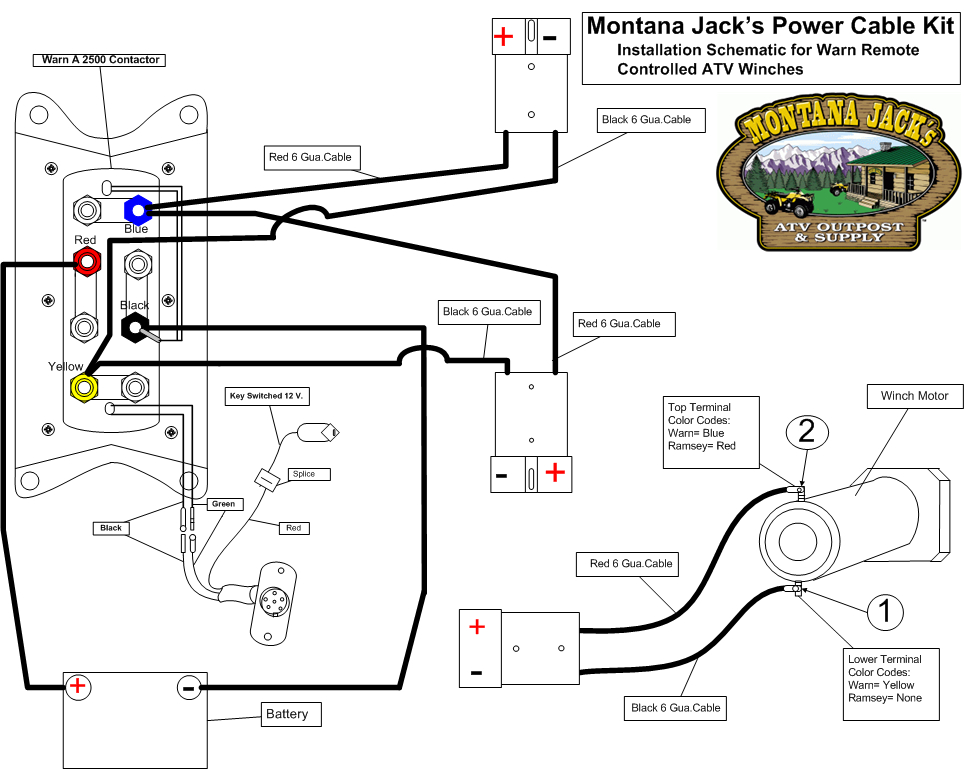
In many cases, Master Pull recommend choosing a shorter winch line than the wire cable or synthetic that came factory on the winch. For most off-road winches this is ideally 10' - 20' shorter. Not only will your winch work more efficiently but you will also decrease the chance of damaging the winch or winch line from incorrectly spooling the line during tricky winching procedures.
To make up for the decrease in winch line length, we recommend carrying a winch line extension. A winch extension also allows for more versatility in winching procedures, so it is a good item to carry in your vehicle.
Choosing a winch line diameter comes down to the strength of the winch line. Master Pull recommends using a 1.5:1 to 2:1 safety factor with the winch that you are installing the winch line on. This means the winch line should have a breaking strength of 1.5 to 2 times the pulling power of the winch. For example, if you have a winch with a 9,000 lb pulling capacity, the line should have a breaking strength in the range of 13,500 to 18,000 lbs or higher.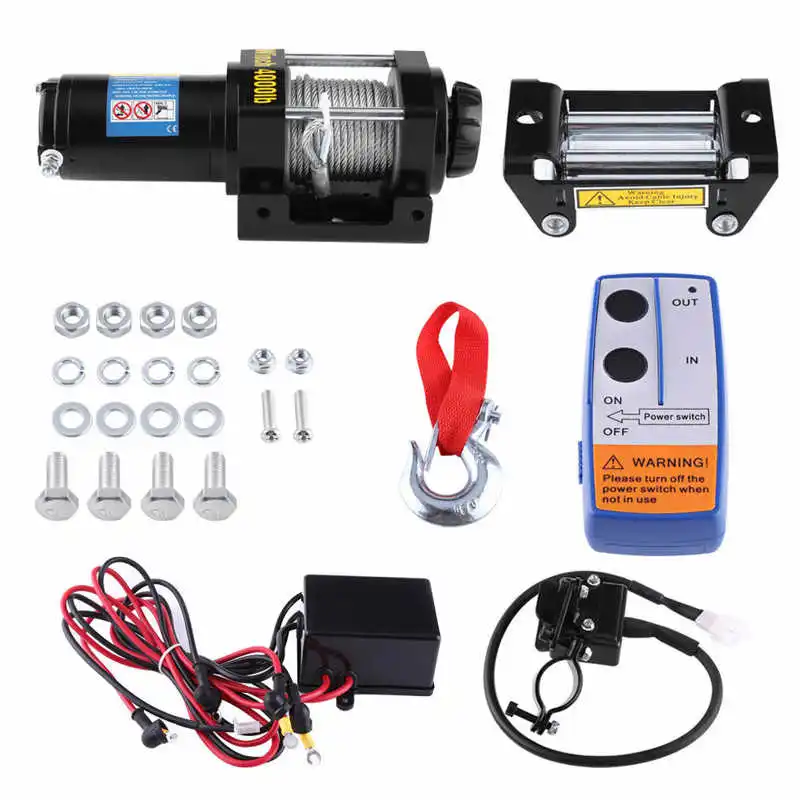
It is always possible to put a larger diameter winch line for additional strength, but keep in mind that as winch line diameter increases, the length of the line has to decrease for it to fit on the drum. This is where the high breaking strengths of the Superline® and Superline® XD really shine. With these winch lines, you can typically use a smaller diameter and achieve the same safety factor as a normal synthetic winch line. For example, a 3/8" diameter Classic winch line has a breaking strength of 17,600 lbs. A 5/16" diameter Superline® is rated at 21,700 lbs, meaning you can fit more line on your drum and increase the breaking strength by going with the Superline®.
Below is a guideline for choosing the length and diameter winch line to run on your winch. It shows a list of common winches and the diameter/length of the wire cable or synthetic winch line that came factory on the winch. It also shows the recommended diameter and length to use if converting to Classic, Superline®, or Superline® XD synthetic winch lines.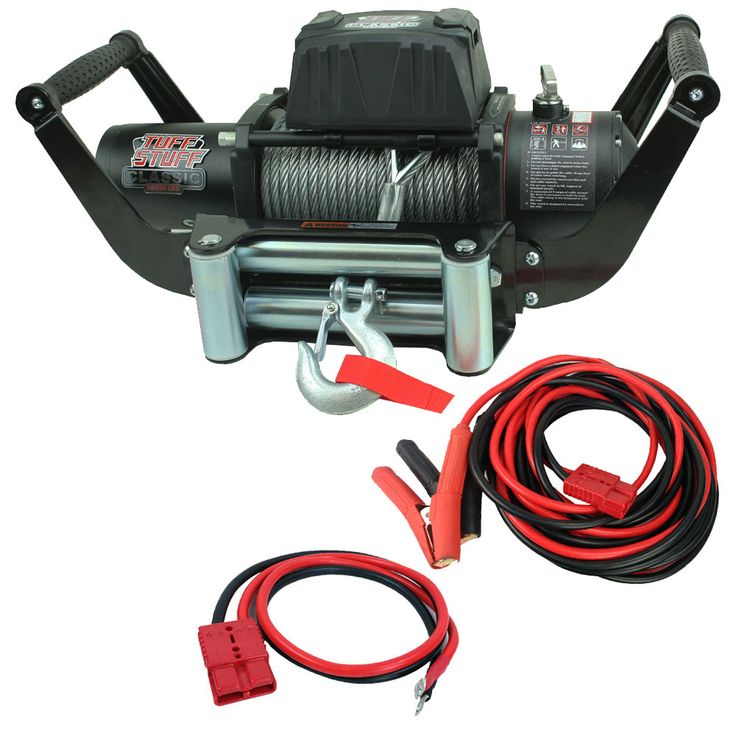 Note that this is not a concrete guide, and depending on the application you may need different requirements.
Note that this is not a concrete guide, and depending on the application you may need different requirements.
Warn® | ||||
| Wire Cable | Classic | Superline | Superline XD Black | |
| ZEON 12, ZEON 12 Platinum | 3/8" x 80' | 3/8" x 75' | 5/16" x 100' or 3/8" x 75' | 3/8" x 85' |
| ZEON 10-S, ZEON 10 | 3/8" x 80' | 3/8" x 75' | 5/16" x 100' or 3/8" x 75' | 3/8" x 85' |
| ZEON 8-S, ZEON 8 | 5/16"x100' | 5/16" x 100' | 5/16" x 100' | 5/16" x 100' |
| 16.5ti, M15000 | 7/16" X 90' | 7/16" x 100' | 3/8" x 100' or 7/16" x 75' | 7/16" x 85' |
| M12000 | 3/8" X 125' | 3/8" x 125' | 5/16" x 125' or 3/8" x 125' | 3/8" x 85' |
| M10000 | 3/8" X 125' | 3/8" x 125' | 5/16" x 125' or 3/8" x 125' | 3/8" x 85' |
| VR8, VR8-S | 5/16" x 94' | 5/16" x 100' | 5/16" x 100' | 5/16" x 100' |
| VR10, VR10-S | 3/8" x 80' | 3/8" x 75' | 5/16" x 100' or 3/8" x 75' | 3/8" x 85' |
| VR12, VR12-S | 3/8" x 80' | 3/8" x 75' | 5/16" x 100' or 3/8" x 75' | 3/8" x 85' |
| VR12000 | 3/8" x 94' | 3/8" x 100' | 5/16" x 100' or 3/8" x 75' | 3/8" x 85' |
| VR10000 | 3/8" x 94' | 3/8" x 100' | 5/16" x 100' or 3/8" x 75' | 3/8" x 85' |
Endurance 12. 0, Powerplant HD 0, Powerplant HD | 3/8" x 80' | 3/8" x 75' | 5/16" x 100' or 3/8" x 75' | 3/8" x 85' |
| Powerplant HP, XD9000I, 9.5cti | 5/16" x 125' | 3/8" x 100' | 5/16" x 125' | 5/16" x 100' or 3/8" x 85' |
| 9.5 xp | 5/16" x 100' | 3/8" x 75' | 5/16" x 100' | 5/16" x 100' or 3/8" x 85' |
| M8274-50 | 5/16" X 150' | 5/16" x 150' or 3/8" x 125' | 5/16" x 150' or 3/8" x 125' | 5/16" x 100' or 3/8" x 85' |
| XD9000 | 5/16" X 100' | 3/8" x 75' | 5/16" x 100' | 5/16" x 100' or 3/8" x 85' |
| M8000 | 5/16" X 100' | 5/16" x 100' | 5/16" x 100' | 5/16" x 100' |
| M6000 | 5/16" X 80' | 5/16" x 75' | 5/16" x 75' | N/A |
| M6000 SDP | 5/16" X 50' | 5/16" x 50' | 5/16" x 50' | N/A |
| 9.0Rc | 3/8" X 50' | 3/8" x 50' | 5/16" X 50' or 3/8" x 50' | 3/8" x 50' |
| RT15 XT15 | 5/32" x 50 | 3/16" x 50' | 3/16" x 50' | N/A |
| RT25 XT25 | 3/16" x 50' | 3/16" x 50' | 3/16" x 50' | N/A |
| RT30 XT30 | 3/16" x 50' | 3/16" x 50' | 3/16" x 50' | N/A |
| RT40 XT40 | 7/32" x 55' | 1/4 " x 50' | 1/4 " x 50' | N/A |
| SnoWinch | 5/32" x 40' | 3/16" x 50' | 3/16" x 50' | N/A |
Ramsey® | ||||
| Wire Cable | Classic | Superline | Superline XD | |
| Patriot 15000 | 7/16" X 90' | 7/16" x 100' | 3/8" x 100' or 7/16" x 75' | 7/16" x 85' |
| Patriot 12000, RE12000 | 3/8" X 125' | 3/8" x 125' | 5/16" x 125' or 3/8" x 125' | 3/8" x 85' |
| Patriot UT 9500, Patriot 9500, Patriot 8000 | 5/16" x 105' | 3/8" x 75' | 5/16" x 100' | 5/16" x 100' |
| PLATINUM 9500, PLATINUM 9000 | 5/16" X 150' | 3/8" x 125' | 5/16" x 150' | 5/16" x 100' |
| RE 10,000 | 5/16" x 150' | 3/8" x 125' | 5/16" x 150' or 3/8" x 125' | 3/8" x 85' |
| TR5000 | 1/4" x 50' | 1/4" x 50 | 1/4" x 50 | N/A |
| Patriot 6000 | 1/4" x 100' | 5/16" x 75' | 1/4" x 100' | N/A |
| Pro Plus 8000, Pro Plus 6000 | 5/16" X 95' | 5/16" x 100' | 5/16" x 100' | 5/16" x 100' |
Rep 8.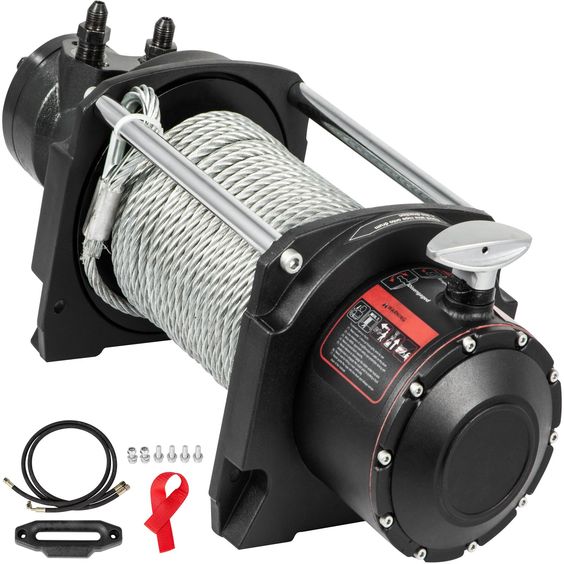 5 E, Rep 9.5 E, Rep 8000, Rep 9000 5 E, Rep 9.5 E, Rep 8000, Rep 9000 | 5/16" x 95' | 3/8" x 75' | 5/16" x 100' | 5/16" x 100' |
| Rep 5000 | 1/4" x 80' | 1/4" x 75' | 1/4" x 75' | N/A |
| RE 8000 | 5/16" X 150' | 5/16" x 150' | 5/16" x 150' | 5/16" x 100' |
| QM 9000 | 5/16" X 105' | 3/8" x 75' | 5/16" x 100' | 5/16" x 100' |
| QM 8000 | 5/16" X 95' | 3/8" x 75' | 5/16" x 100' | 5/16" x 100' |
| QM 5000 | 1/4" X 80' | 1/4" x 75' | 1/4" x 75' | N/A |
| ATV 2500, ATV 3500, Badger 2500 | 3/16" X 50' | 3/16" x 50' | 3/16" x 50' | N/A |
Superwinch® | ||||
| Wire Cable | Classic | Superline | Superline XD | |
| EP16.5 | 7/16" x 90' | 7/16" x 100' | 3/8" x 100' or 7/16" x 75' | 7/16" x 85' |
EP12. 5 5 | 3/8" X 125' | 3/8" x 125' | 5/16" x 125' or 3/8" x 125' | 3/8" x 85' |
| Husky 10 | 3/8" X 90' | 3/8" x 100' | 5/16" x 100' or 3/8" x 100' | 3/8" x 85' |
| LP10000 | 3/8" x 75' | 3/8" x 75' | 5/16" x 100' or 3/8" x 75' | 3/8" x 85' |
| X-9, S9000 | 5/16" X 100' | 3/8" x 75' | 5/16" x 100' | 5/16" x 100' or 3/8" x 85' |
| LP 8500 | 5/16" X 94' | 5/16" x 100' | 5/16" x 100' | 5/16" x 100' or 3/8" x 85' |
| Talon 9.5, Talon 9.5i | 3/8" x 85' | 3/8" x 75' | 5/16" x 100' or 3/8" x 75' | 5/16" x 100' or 3/8" x 85' |
| Talon 12.5, Talon 12.5i | 3/8" x 85' | 3/8" x 75' | 5/16" x 100' or 3/8" x 75' | 3/8" x 85' |
| Talon 14 | 1/2" x 90' | 7/16" x 100' | 3/8" x 100' or 7/16" x 75' | 7/16" x 85' |
| Talon 18 | 1/2" x 90' | 1/2" x 75' | 7/16" x 100' | 7/16" x 85' |
| Tigershark 9500 | 21/64" x 96' | 3/8" x 75' | 5/16" x 100' | 5/16" x 100' or 3/8" x 85' |
| Tigershark 11500 | 3/8" x 85' | 3/8" x 75' | 5/16" x 100' or 3/8" x 75' | 3/8" x 85' |
| Tigershark 13500 | 3/8" x 85' | 7/16" x 75' | 3/8" x 75' | 3/8" x 85' |
| Tigershark 15500 | 29/64" x 94' | 7/16" x 100' | 3/8" x 100' or 7/16" x 75' | 7/16" x 85' |
| Tigershark 17500 | 15/32" x 85' | 1/2" x 75' | 7/16" x 75' | 7/16" x 85' |
| Rock 98 | 3/8" X 50' | 3/8" x 50' | 5/16"x 75' or 3/8"x 50' | 3/8" x 50' |
| Bill Burke Edition | 3/8" X 80' | 3/8" x 75' | 5/16" x 100' or 3/8" x 75' | 3/8" x 85' |
| Winch in a Bag | 5/32" X 50' | 3/16" x 50' | 3/16" x 50' | N/A |
| Terra 35, LT3000, Terra 25 | 3/16" X 50' | 3/16" x 50' | 3/16" x 50' | N/A |
| Terra 45, UTV 4000 | 7/32" X 50' | 1/4" x 50' | 3/16" x 50' or 1/4" x 50' | N/A |
| LT 2000 | 5/32" X 50' | 3/16" x 50' | 3/16" x 50' | N/A |
Mile Marker® | ||||
| Wire Cable | Classic | Superline | Superline XD | |
| SEC8 | 5/16 x 100 | 5/16" x 100' | 5/16" x 100' | 5/16" x 100' |
SEC9.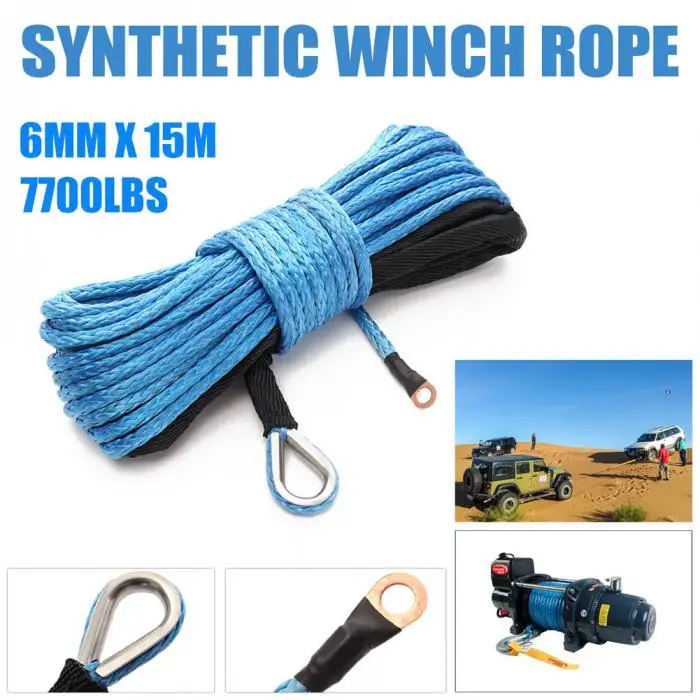 5, SI9500 5, SI9500 | 5/16 x 100 | 3/8" x 75' | 5/16" x 100' | 5/16" x 100' or 3/8" x 85' |
| H9000, HI9000 | 3/8" x 100' | 3/8" x 100' | 5/16" x 125' or 3/8" x 100' | 5/16" x 100' or 3/8" x 85' |
| SEC12, SI12000, h20500, h22000, HI10500, HI12000 | 3/8" x 100' | 3/8" x 100' | 5/16" x 125' or 3/8" x 100' | 3/8" x 85' |
| HI-18k | 1/2" x 96' | 1/2" x 100' | 7/16" x 100' | 7/16" x 85' |
| PE 2.5, PE 3.5 | 3/16" X 50' | 3/16" x 50' | 3/16" x 50' | N/A |
| PE 4.5 | 1/4" x 80' | 1/4" x 75' | 3/16" x 100' or 1/4" x 75' | N/A |
Mega Winch® | ||||
| Wire Cable | Classic | Superline | Superline XD | |
| MW-12000 | 3/8" X 125' | 3/8" X 125' | 5/16" x 150' or 3/8" X 125' | 3/8" x 85' |
Smittybilt® | ||||
| Wire Cable | Classic | Superline | Superline XD | |
XRC3, XRC 2.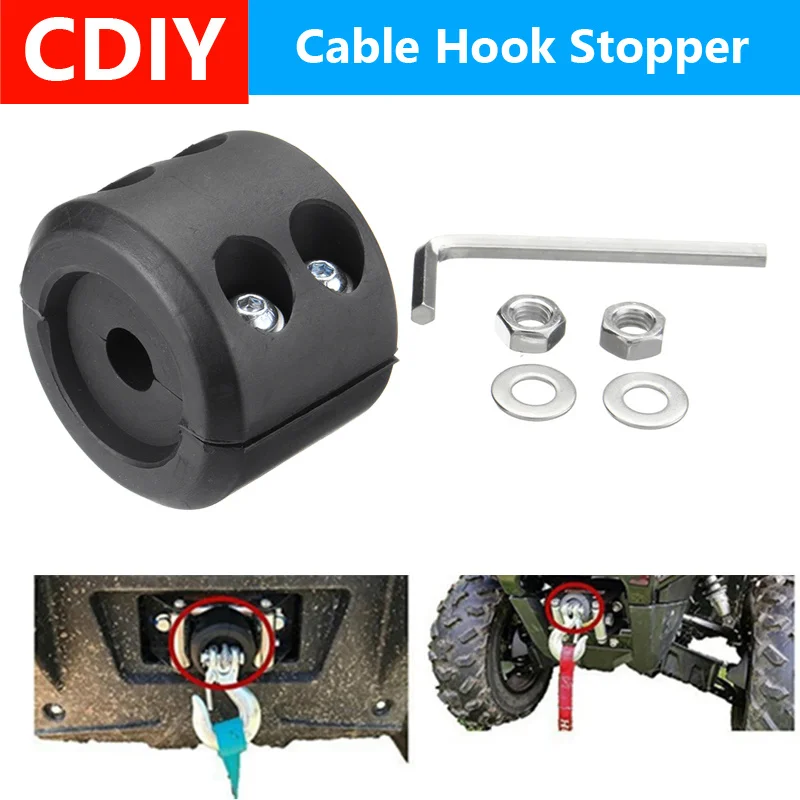 0 0 | 1/4" X 38' | 3/16" x 50' | 3/16" x 50' | N/A |
| XRC4.0 | 1/4" x 33' | 1/4" x 50' | 3/16" x 50' | N/A |
| XRC8, X2O8 | 5/16" X 92' | 5/16" x 100' | 5/16" x 100' | 5/16" x 100' |
| XRC10, X2O10 | 23/64" X 94' | 3/8" x 100' | 5/16" x 125' or 3/8" x 100' | 3/8" x 85' |
| XRC15, X2O15 | 1/2" x 98' | 7/16" x 100' | 3/8" x 125' or 7/16" x 100' | 7/16" x 85' |
| XRC12, X2O12 | 3/8" X 94' | 3/8" x 100' | 5/16" x 125' or 3/8" x 100' | 3/8" x 85' |
T-Max® / Westin® | ||||
| Wire Cable | Classic | Superline | Superline XD | |
| ATW 4500 | 1/4" X 50' | 1/4" x 50' | 3/16" x 50' or 1/4" x 50' | N/A |
| ATW 6000 | 1/4" X 50' | 1/4" x 50' | 1/4" x 50' | N/A |
| EW 9000 | 21/64" X 94' | 3/8" x 75' | 5/16" x 100' or 3/8" x 75' | 5/16" x 100' or 3/8" x 85' |
| EW 12500 | 3/8" X 94' | 3/8" x 100' | 5/16" x 125' or 3/8" x 100' | 3/8" x 85' |
| EWI 12000 | 3/8" X 100' | 3/8" x 100' | 5/16" x 125' or 3/8" x 100' | 3/8" x 85' |
| EW9500 | 21/64" X 94' | 3/8" x 75' | 5/16" x 100' or 3/8" x 75' | 5/16" x 100' or 3/8" x 85' |
| EWI9500 | 21/64" X 100' | 3/8" x 75' | 5/16" x 100' or 3/8" x 75' | 5/16" x 100' or 3/8" x 85' |
| PEW 9500WCP | 3/8" X 94' | 3/8" x 100' | 5/16" x 125' or 3/8" x 100' | 5/16" x 100' or 3/8" x 85' |
Kodiak Winch® / Quality Gear® | ||||
| Wire Cable | Classic | Superline | Superline XD | |
| CUB EXT | 3/16" X 50' | 3/16" x 50' | 3/16" x 50' | N/A |
| CUB | 3/16" X 50' | 3/16" x 50' | 3/16" x 50' | N/A |
| BRUIN | 3/8" X 100' | 3/8" x 100' | 5/16" x 125' or 3/8" x 100' | 3/8" x 85' |
| GRIZZLY | 3/8" X 100' | 3/8" x 100' | 5/16" x 125' or 3/8" x 100' | 3/8" x 85' |
Promark Offroad® | ||||
| Wire Cable | Classic | Superline | Superline XD | |
| 1500 XT | 5/32" X 40' | 3/16" x 50' | 3/16" x 50' | N/A |
| 2000 XT, 2500 XT, 3000 XT | 3/16" X 45' | 3/16" x 50' | 3/16" x 50' | N/A |
| 2500 TRAIL SERIES, 3000 TRAIL SERIES, 3500 TRAIL SERIES | 3/16" X 40' | 3/16" x 50' | 3/16" x 50' | N/A |
| 3500 XT, 4000 XT | 7/32" X 45' | 1/4" x 50' | 3/16" x 50' or 1/4" x 50' | N/A |
| 3500 OUTBACK SERIES | 7/32" X 50' | 1/4" x 50' | 3/16" x 50' or 1/4" x 50' | N/A |
| 4000 OUTBACK SERIES | 7/32" X 55' | 1/4" x 50' | 3/16" x 50' or 1/4" x 50' | N/A |
| 8000 SILVER BACK | 5/16" X 87' | 5/16" x 75' | 5/16" x 75' | 5/16" x 100' |
| 8000 MIDNIGHT SERIES | 5/16" X 87' | 5/16" x 75' | 5/16" x 75' | 5/16" x 100' |
| 10000 SILVER BACK, 10000 MIDNIGHT SERIES | 9/25" X 87' | 3/8" x 75' | 5/16" x 100' or 3/8" x 75' | 3/8" x 85' |
| 12000 SILVER BACK, 12000 MIDNIGHT SERIES | 3/8" X 87' | 3/8" x 75' | 5/16" x 100' or 3/8" x 75' | 3/8" x 85' |
| GORILLA 15000 | 7/16" X 90' | 7/16" x 100' | 3/8" x 125' or 7/16" x 100' | 7/16" x 85' |
Champion Winch® | ||||
| Wire Cable | Classic | Superline | Superline XD | |
| 10000 electric | 3/8" x 85' | 3/8" x 75' | 5/16" x 100' or 3/8" x 75' | 3/8" x 85' |
| 4500 electric | 7/32" x 52' | 1/4" x 50' | 3/16" x 50' or 1/4" x 50' | N/A |
| 2500 electric, 3000 electric | 3/16" x 50' | 3/16" x 50' | 3/16" x 50' | N/A |
Bulldog Winch® | ||||
| Wire Cable | Classic | Superline | Superline XD | |
| 8000 lb | 5/16" x 100' | 5/16" x 100' | 5/16" x 100' | 5/16" x 100' |
| 9300 lb, 9500 lb | 21/64" x 100' | 3/8" x 75' | 5/16" x 100' or 3/8" x 75' | 5/16" x 100' or 3/8" x 85' |
| 10000 lb | 9/25" x 87' | 3/8" x 75' | 5/16" x 100' or 3/8" x 75' | 5/16" x 100' or 3/8" x 85' |
| 12000 lb | 3/8" x 90' | 3/8" x 75' | 5/16" x 100' or 3/8" x 75' | 3/8" x 85' |
| 15000 lb | 15/32" x 92' | 7/16" x 100' | 3/8" x 125' or 7/16" x 100' | 7/16" x 85' |
| 4000 lb | 7/32" x 55' | 1/4" x 50' | 3/16" x 50' | N/A |
| 3500 lb | 7/32" x 50' | 1/4" x 50' | 3/16" x 50' | N/A |
| 3000 lb | 3/16" x 40' | 3/16" x 50' | 3/16" x 50' | N/A |
| 2000 lb, 2500 lb | 5/32" x 50' | 3/16" x 50' | 3/16" x 50' | N/A |
Engo® | ||||
| Wire Cable | Classic | Superline | Superline XD | |
| E3000 | 7/32" x 30' | 3/16" x 50' | 3/16" x 50' | N/A |
| E4000 | 7/32" x 40' | 1/4" x 50' | 3/16" x 50' | N/A |
| E9000 | 21/64" x 92' | 3/8" x 75' | 5/16" x 100' or 3/8" x 75' | 5/16" x 100' or 3/8" x 85' |
| E10000 | 23/64" x 85' | 3/8" x 75' | 5/16" x 100' or 3/8" x 75' | 5/16" x 100' or 3/8" x 85' |
| E12000 | 3/8" x 85' | 3/8" x 75' | 5/16" x 100' or 3/8" x 75' | 3/8" x 85' |
| EX12 | 3/8" x 88' | 3/8" x 75' | 5/16" x 100' or 3/8" x 75' | 3/8" x 85' |
Kingone® | ||||
| Wire Cable | Classic | Superline | Superline XD | |
| ATV-3000, ATV-3000C | 3/16" x 50' | 3/16" x 50' | 3/16" x 50' | N/A |
| ATV-4000, ATV-4000C | 7/32" x 50' | 1/4" x 50' | 3/16" x 50' or 1/4" x 50' | N/A |
KDS-8.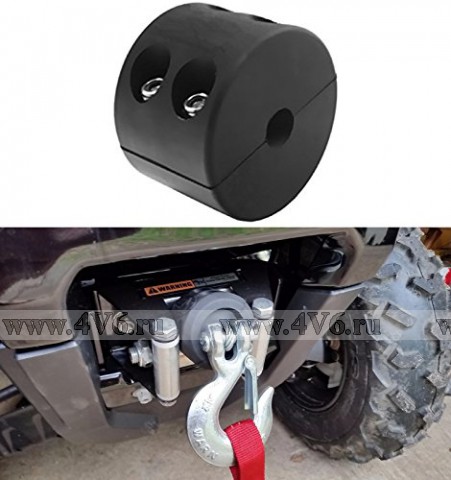 0 0 | 5/16" x 80' | 5/16" x 75' | 5/16" x 75' | 5/16" x 100' |
| KDS-9.0 | 5/16" x 100' | 3/8" x 75' | 5/16" x 100' | 5/16" x 100' |
| KDS-10.0, KDS-10.0i, KDS-10.0c | 11/32" x 100' | 3/8" x 75' | 5/16" x 100' | 5/16" x 100' |
| KDS-12.0i | 3/8" x 90' | 3/8" x 100' | 5/16" x 125 or 3/8" x 100' | 3/8" x 85' |
| TDS-16.5. TDS-16.5C | 7/16" X 90' | 7/16" x 100' | 3/8" x 100' or 7/16" x 75' | 7/16" x 85' |
| TDS-20.0, TDS-20.0C | 15/32" x 83′ | 1/2" x 75' | 7/16" x 100' | 7/16" x 85' |
Badland® | ||||
| Wire Cable | Classic | Superline | Superline XD | |
| Badland 18,000 lb | 1/2" x 75' | 1/2" x 75' | 7/16" x 75' | 7/16" x 85' |
| Badland 12,000 lb | 3/8" x 65' | 3/8" x 75' | 5/16" x 100' or 3/8" x 75' | 3/8" x 85' |
| Badland 9,000 lb | 21/64" x 65' | 3/8" x 75' | 5/16" x 75' | 3/8" x 85' |
| Badland 5,000 lb | 3/16" x 50' | 1/4" x 50' | 3/16" x 50' | N/A |
| Badland 3,500 lb | 3/16" x 50' | 3/16" x 50' | 3/16" x 50' | N/A |
| Badland 2,500 lb | 5/32" x 50' | 3/16" x 50' | 3/16" x 50' | N/A |
It’s finally time to replace that worn out old steel winch cable? Or maybe your wanting to replace your current winch rope with one of ours? How do you choose the correct size winch rope? What size diameter and length will fit on my winch? Many people assume that when they are purchasing a new winch rope for their winch, they can get the largest and longest size they can find.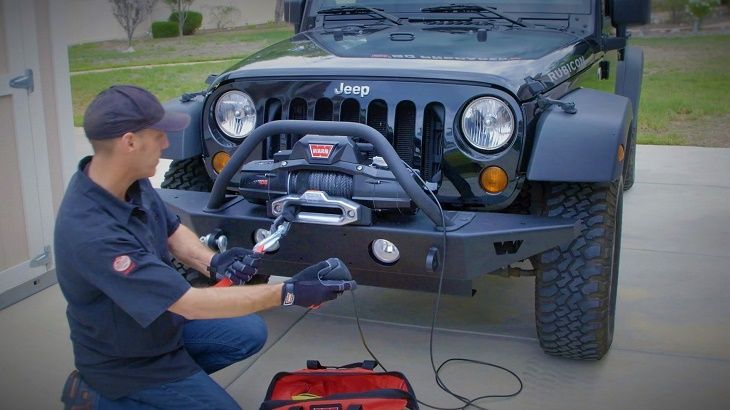 This is absolutely not true and can cause major damage to your winch. If you want to know the details of this issue continue to read on, or you can go straight to our Winch Rope Conversion Chart to see what size winch rope is recommended for your particular winch model. If you don’t see your winch model, feel free to contact us!
This is absolutely not true and can cause major damage to your winch. If you want to know the details of this issue continue to read on, or you can go straight to our Winch Rope Conversion Chart to see what size winch rope is recommended for your particular winch model. If you don’t see your winch model, feel free to contact us!
Winch rope comes in many different size diameters and lengths to fit many different brands and sizes of winches. Let’s look at why it’s important to determine the correct size winch rope in both diameter and length. I will use a common 9,000lb winch for example. From the manufacturer, let’s say this winch originally comes with 100 feet of 5/16″ diameter steel cable. While you can simply use the exact same diameter and length in synthetic winch rope, it is common practice to increase the diameter size of the winch rope to gain an increase in breaking strength and working load capacity. 5/16″ steel cable is rated at 9,800lbs which is just above the maximum pull strength of the winch. 5/16″ synthetic winch rope is around 12,000lbs breaking strength. But, the most common size used on winches ranging from 8k to 12k is 3/8″ diameter for the reasons mentioned above. Our 3/8″ synthetic winch rope has a breaking strength of 20,000lbs!
5/16″ steel cable is rated at 9,800lbs which is just above the maximum pull strength of the winch. 5/16″ synthetic winch rope is around 12,000lbs breaking strength. But, the most common size used on winches ranging from 8k to 12k is 3/8″ diameter for the reasons mentioned above. Our 3/8″ synthetic winch rope has a breaking strength of 20,000lbs!
What about the correct size winch rope length? The “Rule of Thumb” we go by is for every size up in diameter over the original size winch cable or rope, you reduce the length by 15 feet. This allows you to run the larger, stronger size diameter rope while still maintaining the pulling power of the winch. Each layer of rope added on the winch drum reduces your winch’s pulling power. Remember, the first layer of rope on the winch drum is where the winch can achieve its maximum pulling strength. The correct length also keeps from overloading one side of the winch drum during angled pulls.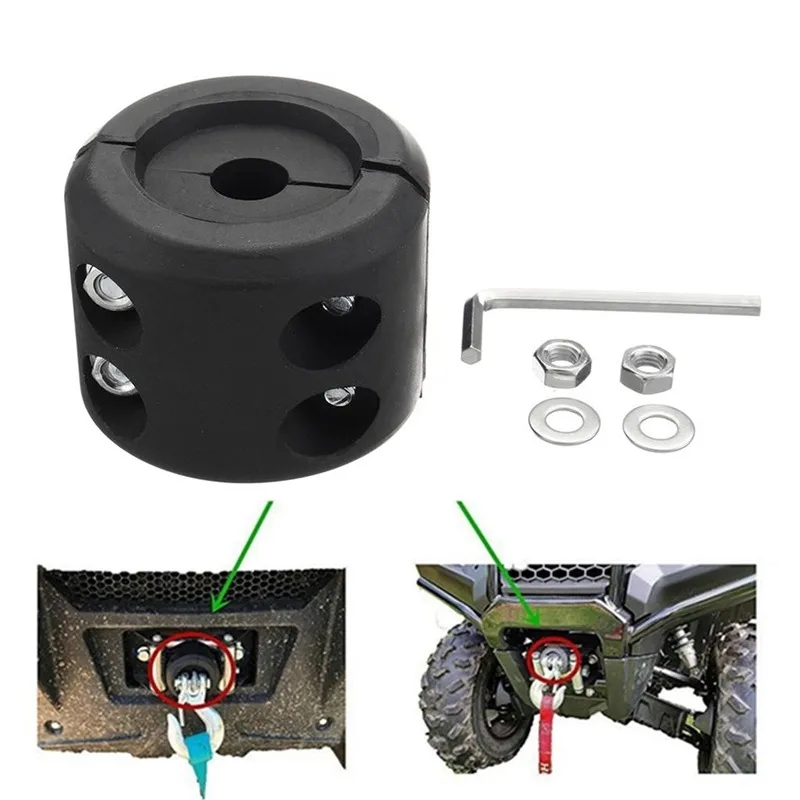 Very rarely do we get lucky enough to have consistent straight pulls. If you overload one side of the winch drum during an angled pull due to too much length of rope, the rope could come in contact with the winch’s tie-bars which can damage your rope and destroy the winch. So what do you do if you need more length from your winch rope? Check out our winch rope extensions!
Very rarely do we get lucky enough to have consistent straight pulls. If you overload one side of the winch drum during an angled pull due to too much length of rope, the rope could come in contact with the winch’s tie-bars which can damage your rope and destroy the winch. So what do you do if you need more length from your winch rope? Check out our winch rope extensions!
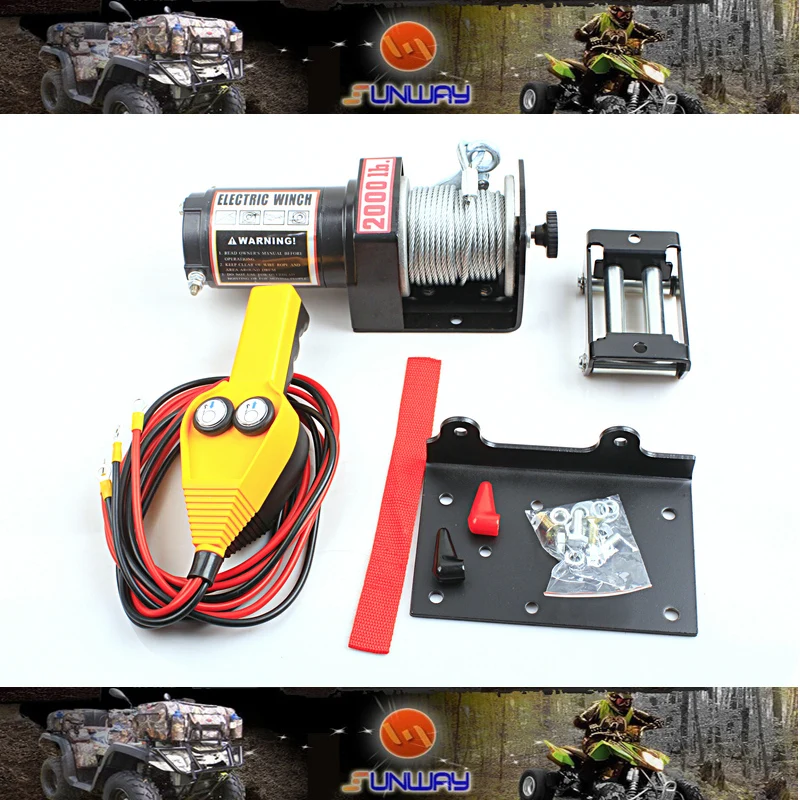 $174.95 – $339.95Select options
$174.95 – $339.95Select optionsSummary
Posted on by john
Winch consists of many different elements. One of the most important, perhaps, is the connecting element, which is placed between the car and the nearest strong support (pole, tree, stone boulder, metal structures, etc.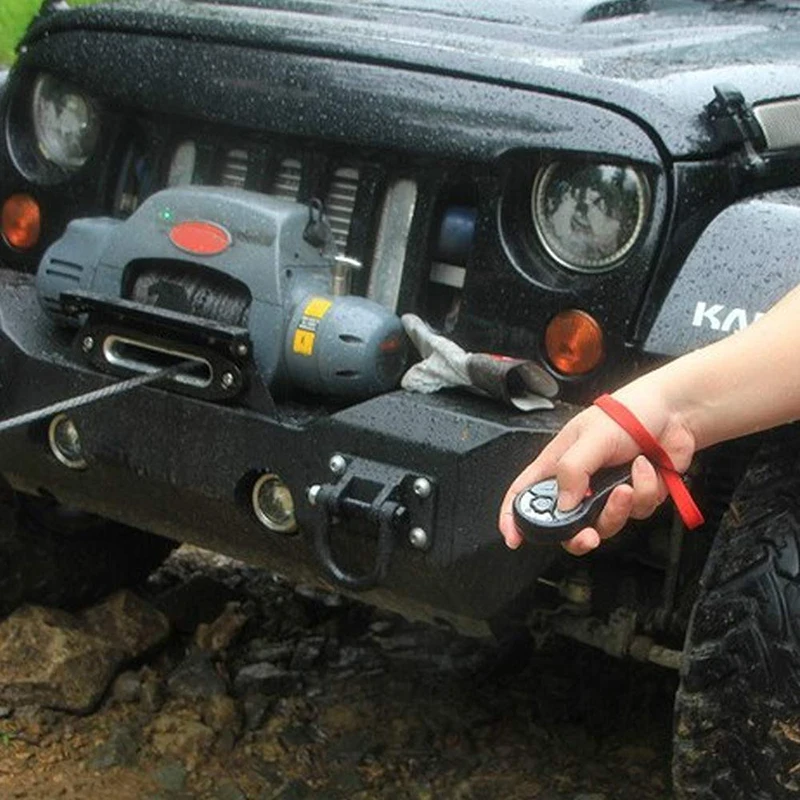 ). As a rule, a cable is used as a connecting element. In this article, we will take a closer look at what cables for winches are, what are their characteristics, and what is important to pay attention to first of all when choosing a cable for a traction device.
). As a rule, a cable is used as a connecting element. In this article, we will take a closer look at what cables for winches are, what are their characteristics, and what is important to pay attention to first of all when choosing a cable for a traction device.
When choosing rope for winch, special attention should be paid to the material of manufacture. Depending on the material, the cables are:
Now let's take a closer look at the strengths and weaknesses of each type.
Benefits of synthetic winch rope:
Disadvantages of synthetic rope:
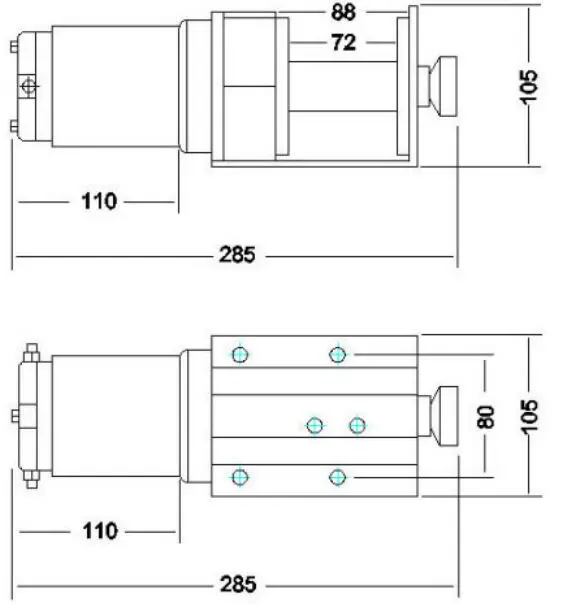
Strengths of steel rope for winch:
The disadvantages of a steel cable are:
As practice shows, in some cases it is more efficient to use both types of cable in a single bundle. For users of small cars, a synthetic cable is also suitable. For a winch on large massive SUVs, it is better to buy a steel cable. Regardless of the type of cable, it is important to periodically check the product for damage in order to avoid breaking the connecting element at the most inopportune moment.
Choosing the type of rope for the winch, you should pay no less attention to the operational and physical characteristics of the product:
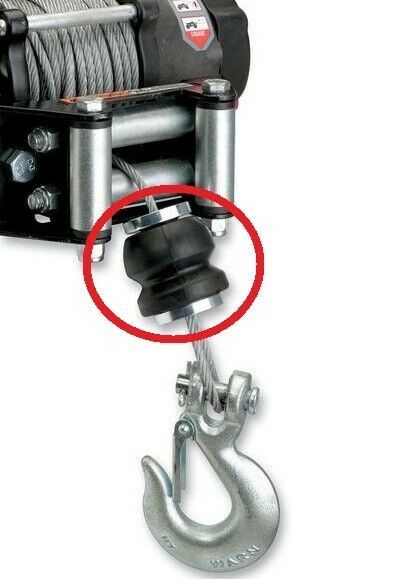 Many car enthusiasts choose a cable length in the range of 15 - 30 m.
Many car enthusiasts choose a cable length in the range of 15 - 30 m. Before choosing these characteristics, you should take into account the terrain in which the trip will take place and the technical characteristics of the winch itself. If the cable can support a certain weight, this does not mean that the engine of the traction device will cope with it.
The diameter of the cable directly affects its load capacity. Below is a table showing the relationship between product diameter and load capacity:
Below is a table showing the relationship between product diameter and load capacity:
| Diameter, mm | Working load, kg | Critical load, kg |
| 5 | 299.8 | 1499.0 |
| 6 | 432.4 | 2161.8 |
| 7 | 587.4 | 2936.8 |
| 8 | 766.8 | 3834.1 |
| 9 | 968.7 | 4843.7 |
| 10 | 1199.2 | 5995.9 |
| 12 | 1727.4 | 8637.0 |
| 14 | 2345.3 | 11726.7 |
| 16 | 3079.5 | 15397.7 |
If you need advice or it's hard to make a choice, you can always contact Winch.com.ua managers and get detailed information on your question.
The winch is a traction device used for horizontal or inclined movement of loads.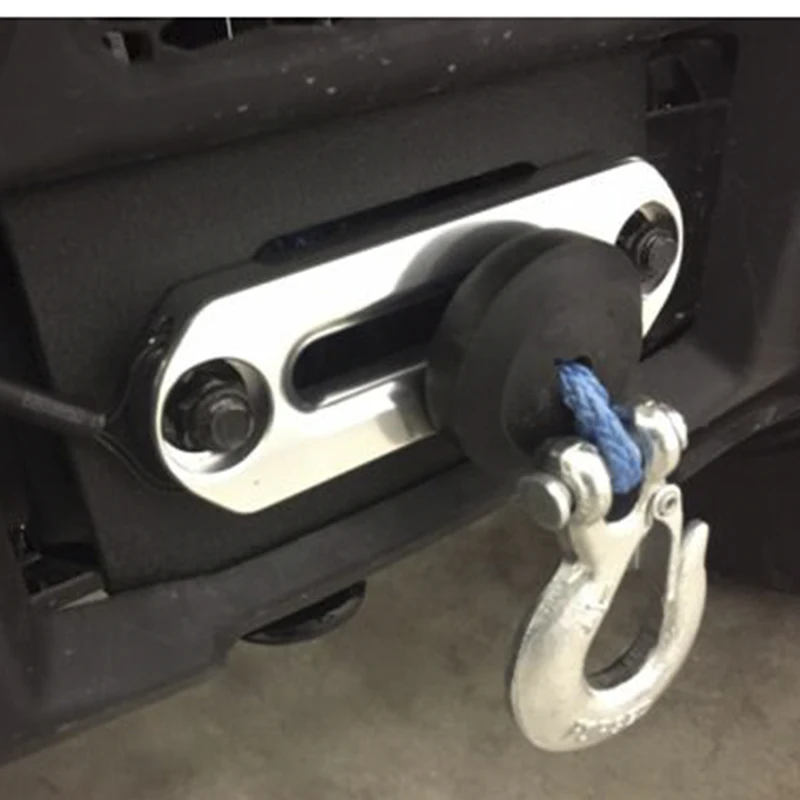 These devices are manual and electric. But, regardless of the type of equipment, the right cable is important for efficient operation. When choosing the best cable for a cargo winch, take into account the material from which it is made, the required diameter, length, and load capacity.
These devices are manual and electric. But, regardless of the type of equipment, the right cable is important for efficient operation. When choosing the best cable for a cargo winch, take into account the material from which it is made, the required diameter, length, and load capacity.
The material used in the manufacture of this product determines its performance to a large extent. Manufacturers offer steel and synthetic products.
The center section is a smooth organic core that gives flexibility to the product. The braid is made from double stranded wire. In different layers of strands, the diameter of the steel wire may be the same or different. The sheath gives the rope high strength. Steel cables are often part of the standard equipment of automotive traction devices.
Multi-layer design provides:

Cons - a significant mass of a running meter, injury risk when steel strands break, poor resistance to corrosion processes.
These products use composite materials that combine different types of synthetic yarns. The most popular are Kevlar ropes. The finished product combines high strength, which is not inferior to the strength of steel ropes, with a lower specific gravity. Synthetic products are often used in the configuration of traction devices manufactured by foreign manufacturers.
Advantages:
Cons - high cost, inconvenience of use at low temperatures, rapid loss of strength at high temperatures. Wet synthetic rope, wound on a drum, turns into a solid piece of ice in the cold. The new Kevlar rope is stronger than steel rope of the same diameter. But synthetic products wear out much faster than metal ones. Another difficulty when using synthetics is the need for constant protection from ultraviolet radiation, which causes its rapid aging.
But synthetic products wear out much faster than metal ones. Another difficulty when using synthetics is the need for constant protection from ultraviolet radiation, which causes its rapid aging.
The load capacity of the product directly depends on the diameter of the product. The load can be rated and critical, exceeding the rated load by several times.
Table of load capacity of steel wire ropes with diameter
| Diameter, mm | Working capacity, kg | Critical load capacity, kg |
| 5 | 299.8 | 1499.0 |
| 6 | 432. | 2161.8 |
| 7 | 587.4 | 2936.8 |
| 8 | 766.8 | 3834.1 |
| 9 | 968.7 | 4843.7 |
| 10 | 1199.2 | 5995.9 |
| 12 | 1727.4 | 8637.0 |
| 14 | 2345.3 | 11726.7 |
| 16 | 3079. |